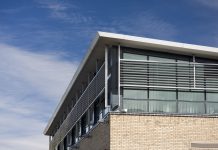The Premier Guarantee Technical Team has advice regarding inadequate floor protection to help you understand real life defects and the issues surrounding them…
We all learn from our mistakes so we thought we would take that theory and let you learn from others so you can avoid problems for yourself and the homeowner in the future.
Type of claim: Inadequate floor protection, design and consideration of adjacent levels particularly external pathways
Implications of this type of defect: A complete design change is often required with this type of claim, and it is more than likely that the property will need to be emptied and all internal furnishings and fittings removed from the walls which is very unpleasant for the new homeowner.
How does this defect occur? Timber floor joists specified, or as in one claim of this type, engineered timber joists – on wallplates but with either finished level at or below external ground level. This means the subfloor is some way beneath external ground level, and there is a complete lack of ventilation, although this is almost academic.
Estimated costs of this type of claim: £££ (Key; Low £ – £££ High)
How can this be avoided from the outset? We understand the reasons for specifying a timber suspended floor, but where the levels are such that the finished floor needs to be at, or below external ground level, it simply isn’t the correct floor type for that situation. Either a block and beam floor is required, although this will still require ventilation of some kind with a sump or confirmation of free-draining ground to significant depth below the plot, together with external landscape drainage, or a solid concrete floor (preferable). Again if it is below external ground level, a full waterproofing application may be needed.
Can this be prevented from worsening? Simply put, no. Unfortunately, this claim type is simply wrong. There is very little that can be done to mitigate the issues that arise. However, the free-draining ground beneath the plot may have helped and perimeter drainage ensuring no surface water run-off could enter the sub-floor, but the real answer is that timber floors at or below external ground floor level are wrong.
What are the early signs of this defect? Initial signs are damp and mould growth, with issues arising around support of the floor, usually sponginess then ultimately failure, the decking usually deteriorates first then the structure.
How can you learn from this? Check the levels and specification for GF, check the ground conditions and consider access requirements.
Further information: Please refer to Chapters 4 & 5 of our Technical Manual for further guidance.
Rachael Ouston
Marketing Consultant
Premier guarantee
+44 (0) 8444 120 888
marketing@premierguarantee.co.uk
Please note: this is a commercial profile













